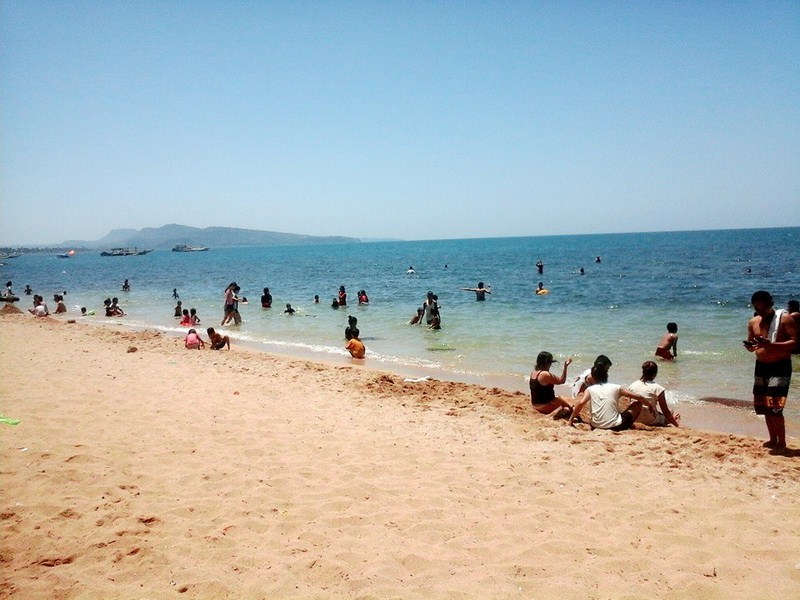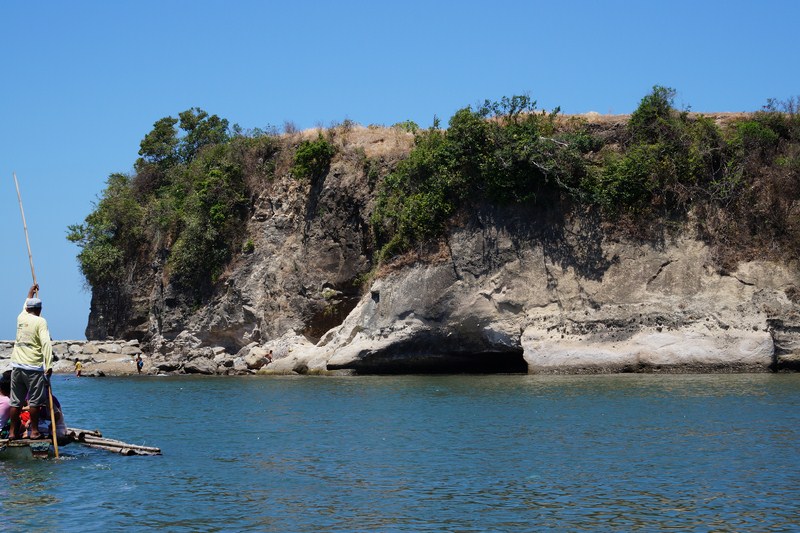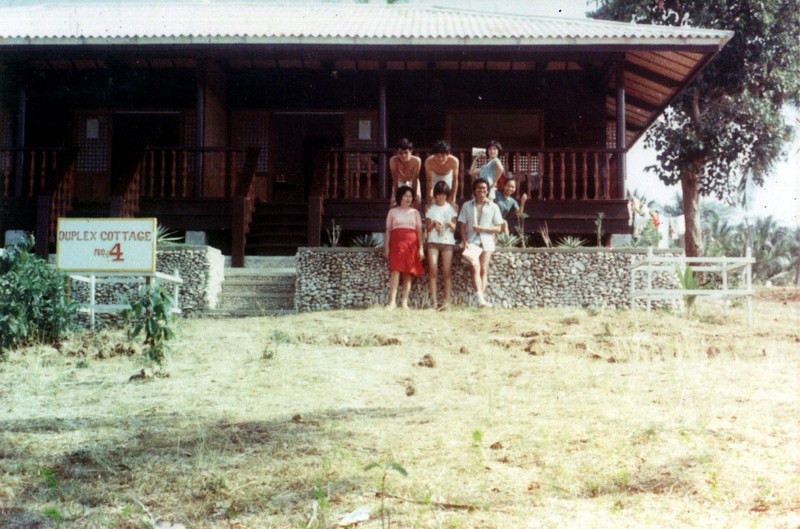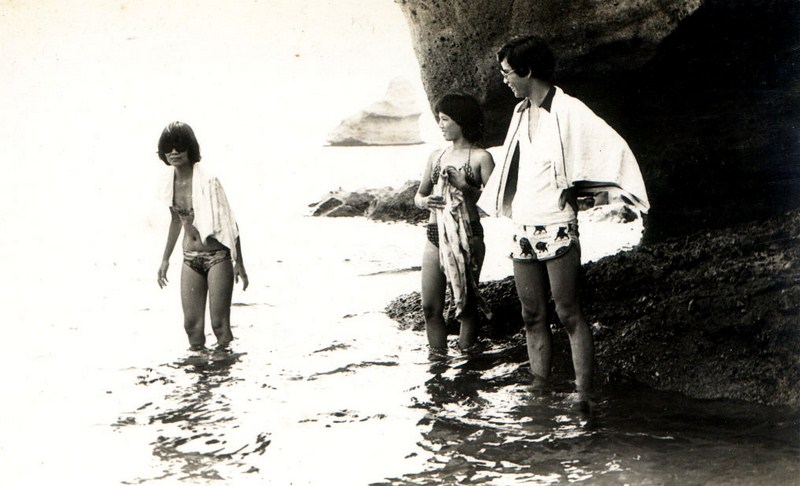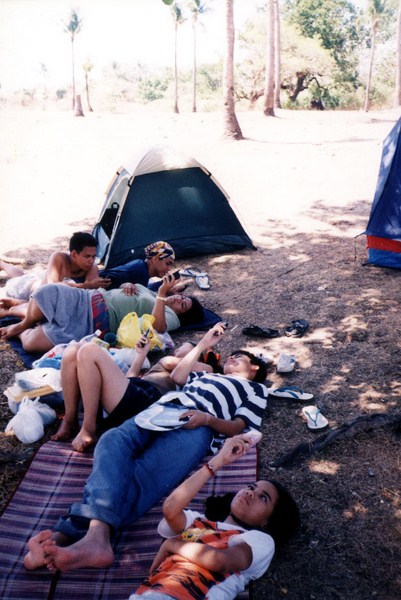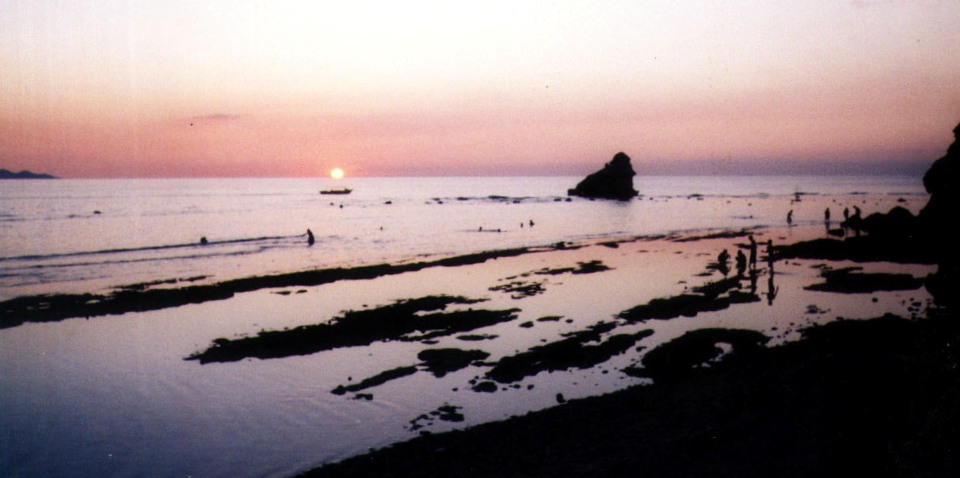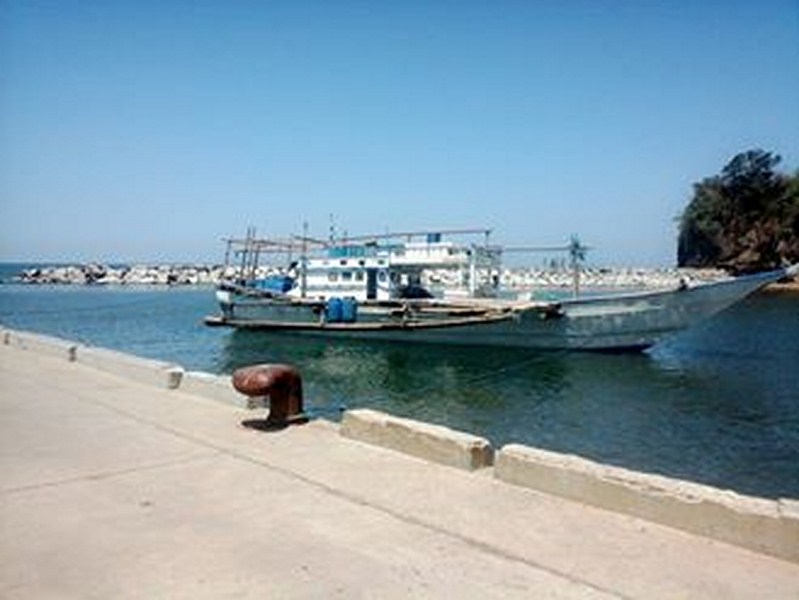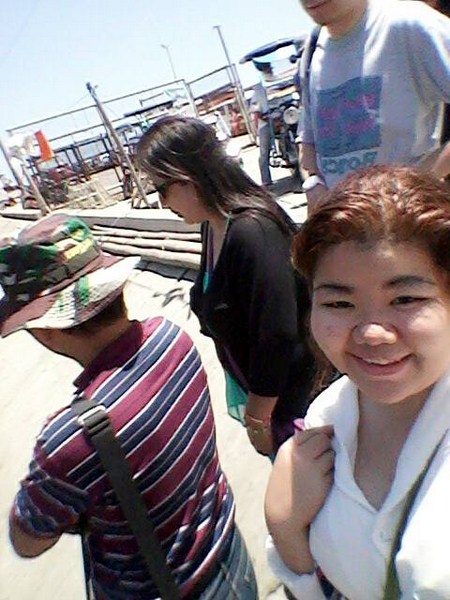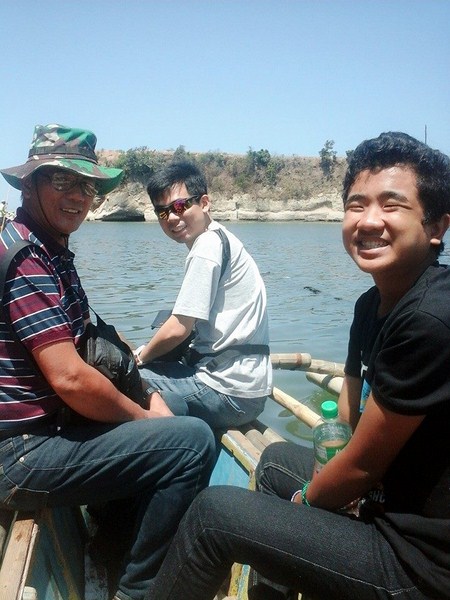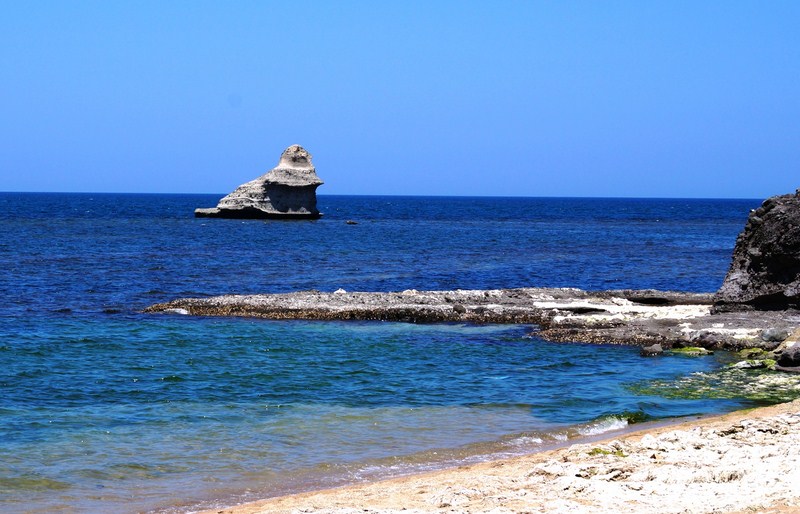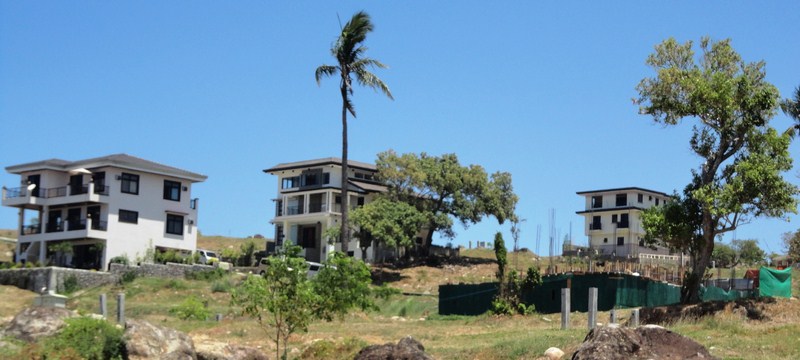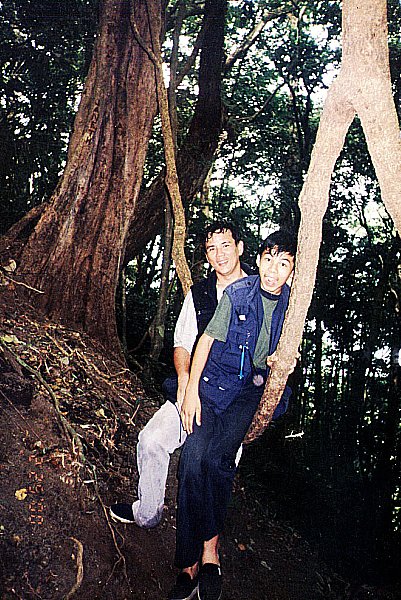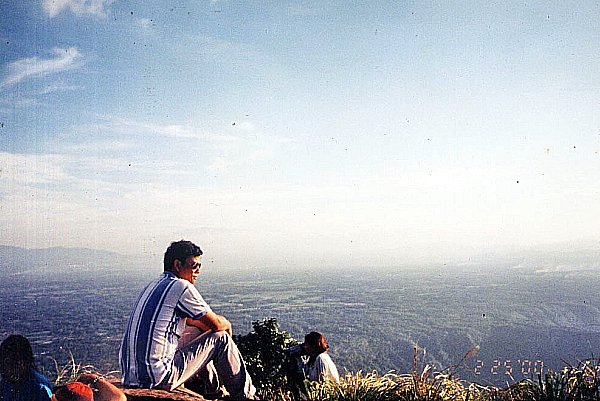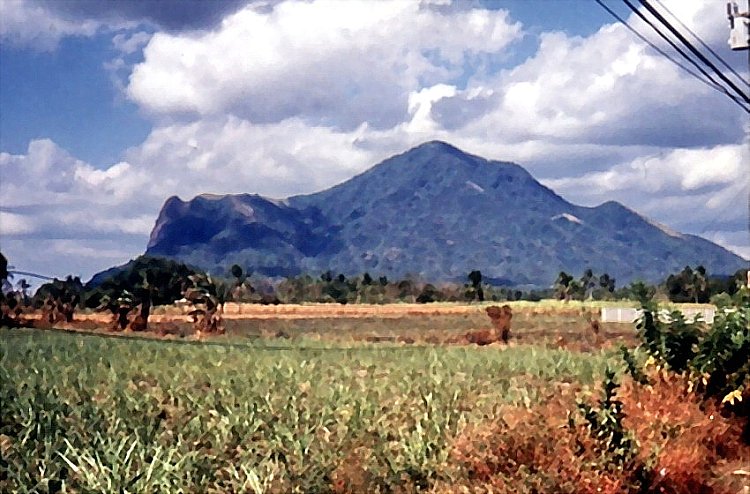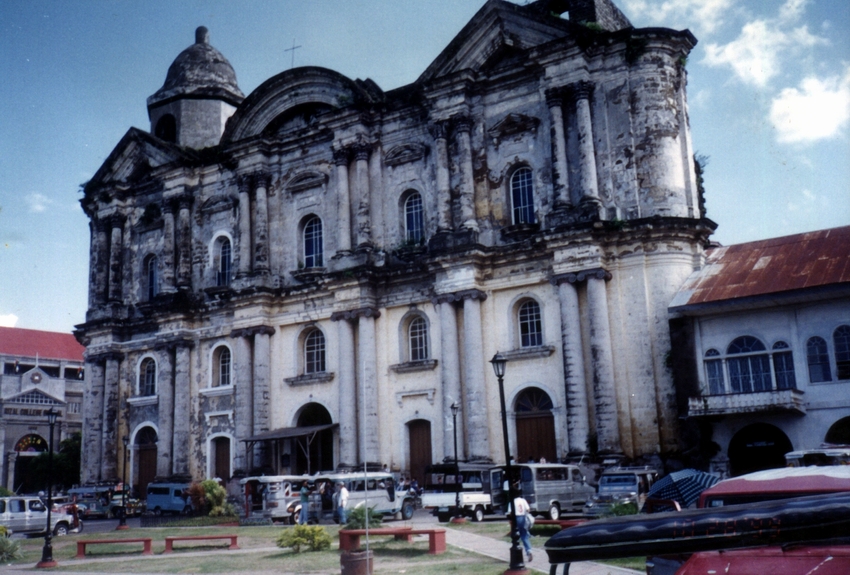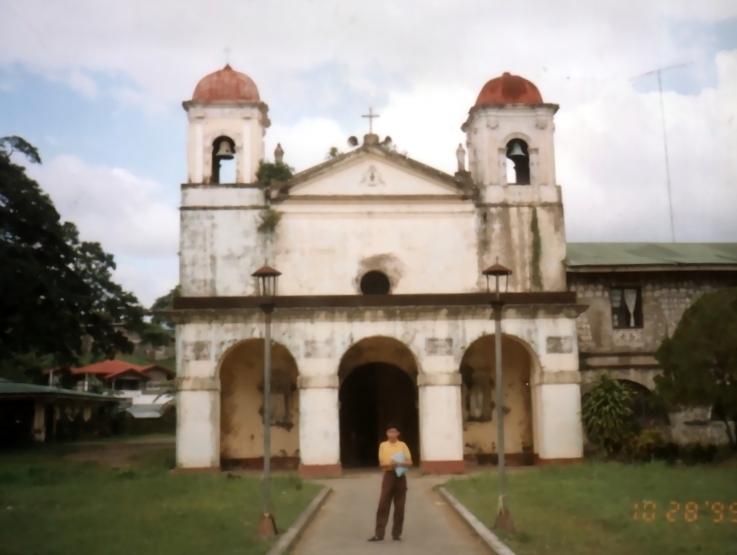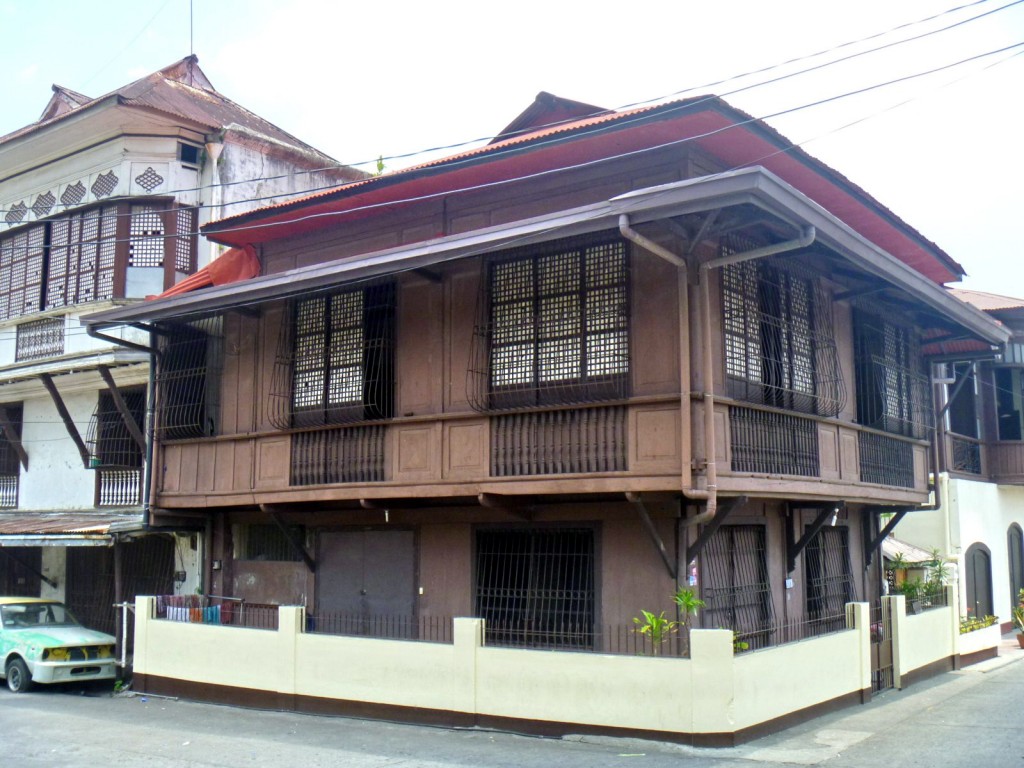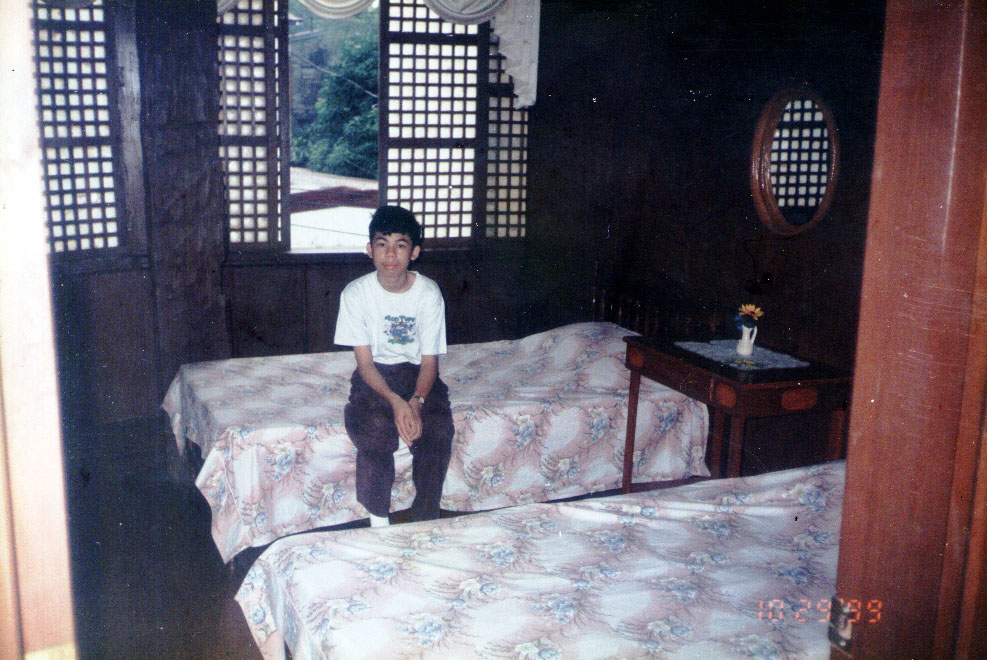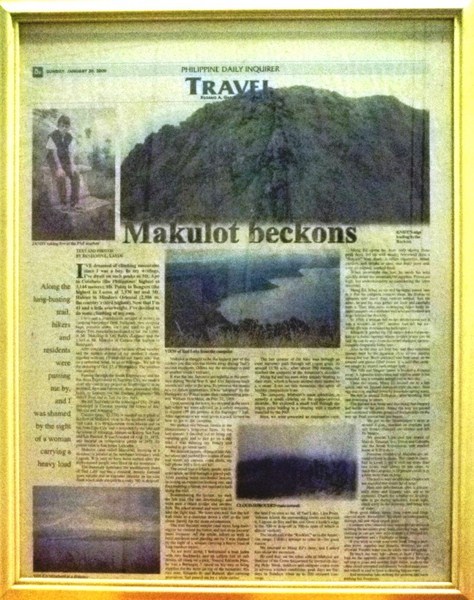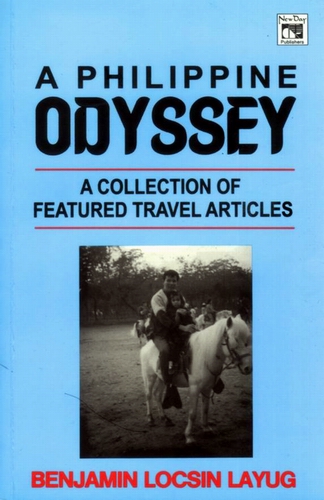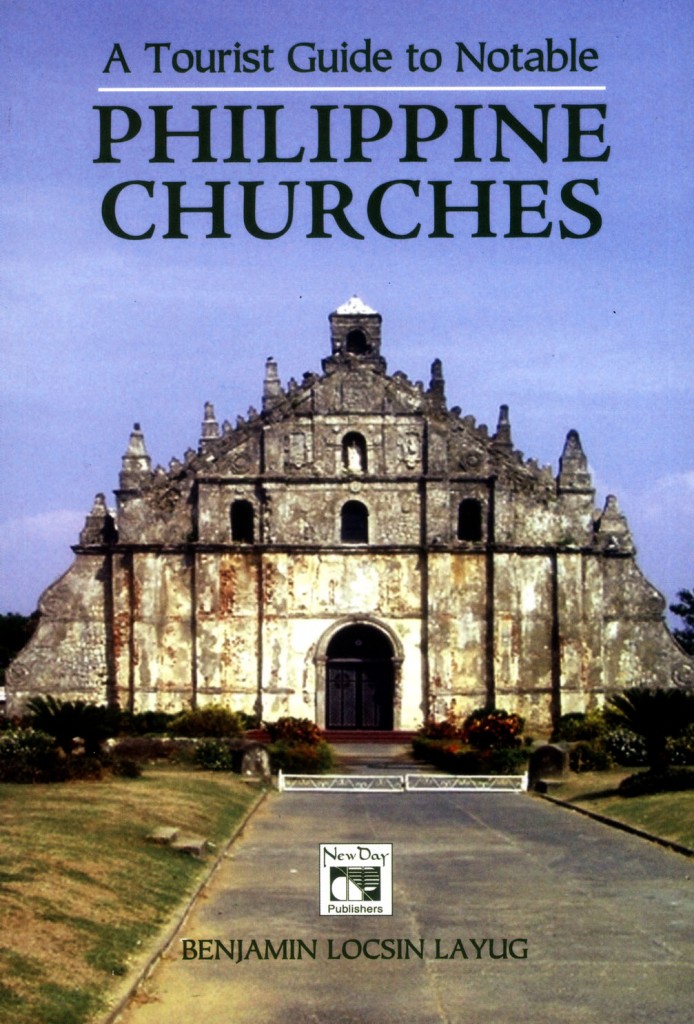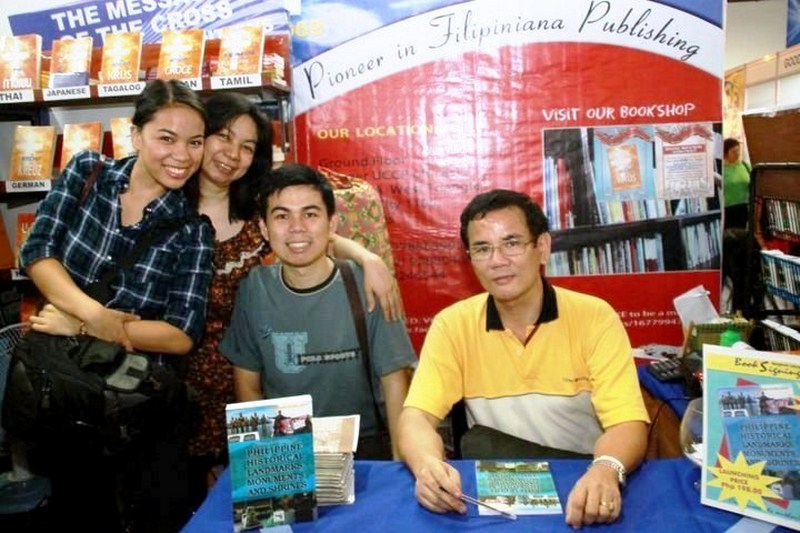When I was still a young man, a lot of our Holy Week family vacations were held at Interlink Resort where my father bought some shares (Check out a past Interlink Resort promotional video at https://www.youtube.com/watch?v=tD3mf7LkrJw). The resort was located on a hilltop within a private peninsula which could only be accessed by boat from Wawa Port.
Back then, the resort had non-airconditioned duplex cottages with airy verandas, a restaurant, small swimming pool, tennis court and a putting green. From the resort, a regular shuttle would transport guests down to the brown sand beach. The nearby cliff was said to have been the site where desperate Japanese soldiers jumped to their death during World War II. I remember that a shrine was installed to mark the event.
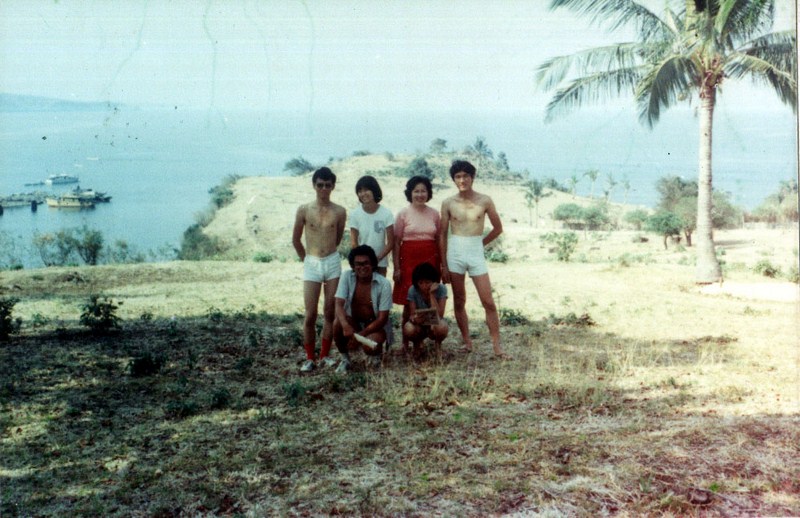
Posing with my Mom and siblings with the peninsula and cliff in the background. On the far left is Wawa Port
The beach, though nothing like Boracay, with more coral reef than sand, was still a sight to behold as, a short distance from the beach, one could behold the well known Payong-Payong Point, a towering, offshore rock formation carved by wind, rain and the smashing waves.
This place is also very familiar to some landscape photographers who love taking photographs of the beautiful sunset with Payong-Payong Point as backdrop. This scenery was also featured in the 2000 movie Pedrong Palad (Starring Joonee Gamboa, Chin Chin Gutierrez and Jaclyn Jose) and the January to May 2011 fantateleserye Mutya.
The beach was somehow created when the developer bulldozed some of the coral away during low tide. During low tide, one could even walk, among the coral, all the way up to the rock formation, climb it and watch the fiery sunset from there. Here, the coral reef drops dramatically into the dark depths. From afar, you can also make out Fortune Island, 14 kms. away. My last visit to the still operating resort was sometime in 1982 or 1983. Some years later, the resort closed down.
I next visited the place on March 29-30, 2002, another long Holy Week end, camping on the hilltop with my son Jandy, daughter Cheska and Jandy’s Jesu-Mariae School teachers Erwin Vizcarra, Joel Fatlaunag and Vener Trillo. The resort back then was already abandoned and in ruins. The evening was very cold and, during the night, we woke up to cows grazing around us. Thoughts of Japanese ghosts in our midst were always in my mind. Some evening it turned out to be.
Holy Week of 2015 again brought me and Jandy there, with friend Melissa Tinonas and her children Almira and Albert. After a 1.5-hour trip via SLEX from Shell Magallanes, we arrived at Wawa Port by 11 AM. There were many cars parked at the port and, from the looks of it, there were many beachcombers also coming for a visit. We all boarded a banca to take us to the other side (PhP10 per person). From the breakwater, you could already see the great number of people who went there for a free swim.
Part of the beach now had some nipa picnic cottages said to be owned by a certain Nanay Precy Morales whose family lives near the Payong-Payong Point. Half of the beach was now cordoned off, off limits to beachcombers as it was now private property. Going up the hill, I talked to the security guard on duty. The hill was now cleared of the ruins of the now defunct Interlink Resort as well as the resident coconut trees and new villas were being built in their place. Well, so much for camping here in the future.
Whatever becomes of the place, memories of Holy Weeks past in the former Interlink Resort will forever live in my mind.

